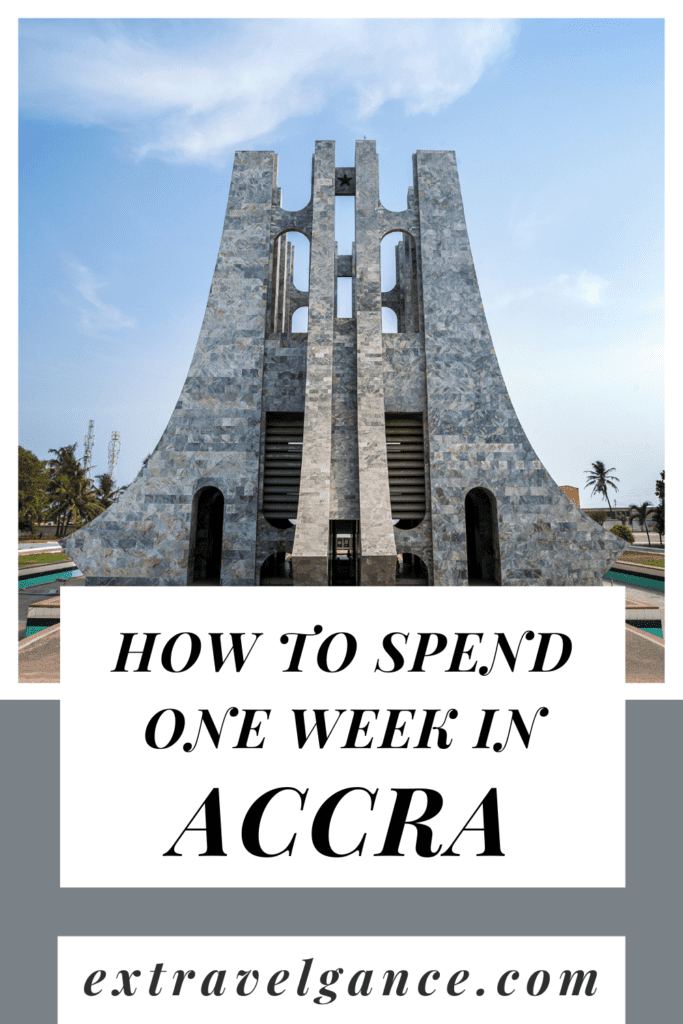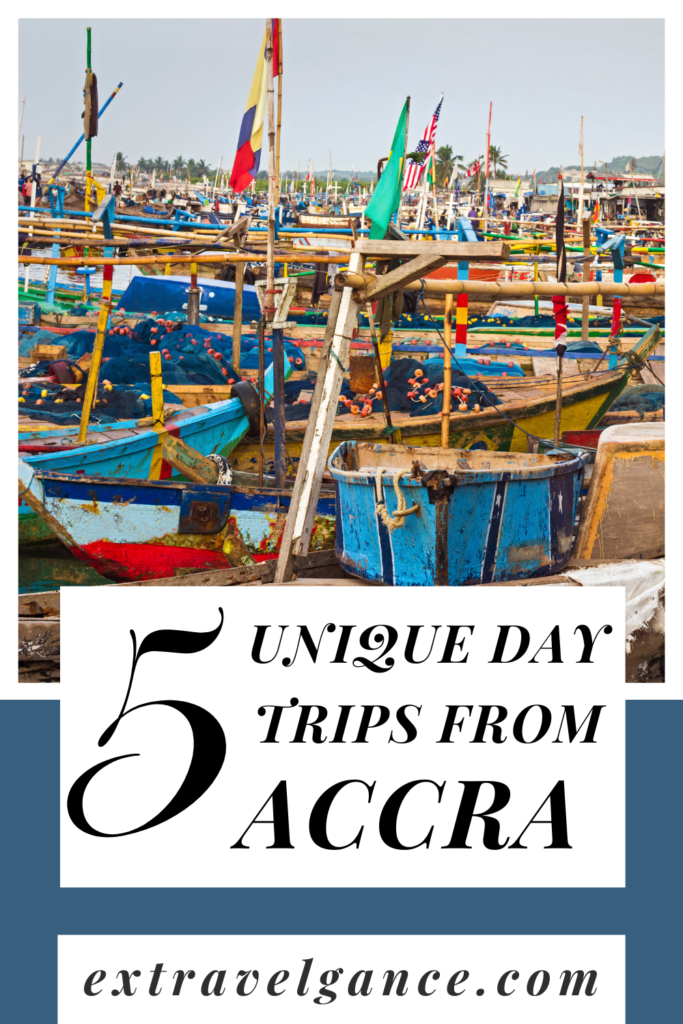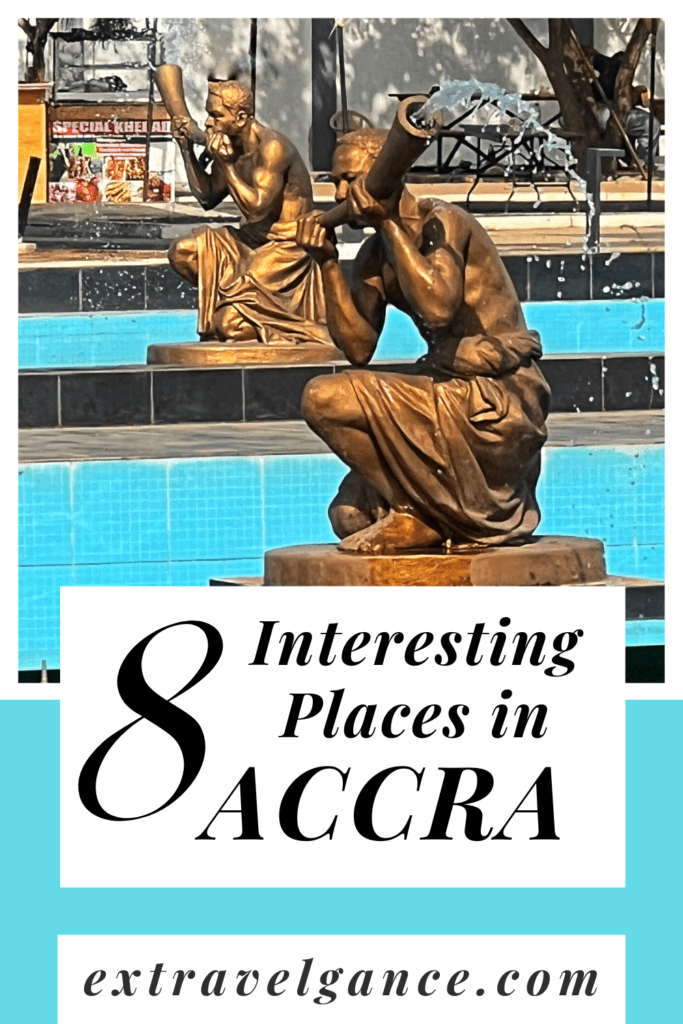
Accra is the capital city of Ghana, and there are many interesting places to see there! Most travelers to Ghana will fly in to Accra, so make sure to spend several days there to get a great feel for this vibrant city.
Note: we may earn a small commission from the affiliate links below.

Kwame Nkrumah Mausoleum & Memorial Park
Ghana gained independence from Great Britain on March 6, 1957. Kwame Nkrumah was a key figure in the country’s independence movement and served as the first president of Ghana from 1957-1966. Kwame Nkrumah Mausoleum & Memorial Park houses his remains and features exhibits on his life and legacy.
During your visit, you can pay your respects to President Nkrumah and his wife, Fathia Nkrumah, in a stunning Italian marble mausoleum. The building represents an upside-down sword which is a symbol of peace in the Akan culture.
A subterranean museum houses many of Nkrumah’s personal effects. You will enjoy seeing photographs of Nkrumah and his wife with many people you will recognize, like Queen Elizabeth II, John F. Kennedy, and Fidel Castro among many others.
Even more stunning than the mausoleum itself are the gardens. A bronze statue of Nkrumah stands proudly in the exact location he stood when he declared Ghana’s independence. As visitors approach the statue and mausoleum, they walk by trees planted by various world leaders and springs lining the walkway. Each of these springs has seven statues of flute blowers.
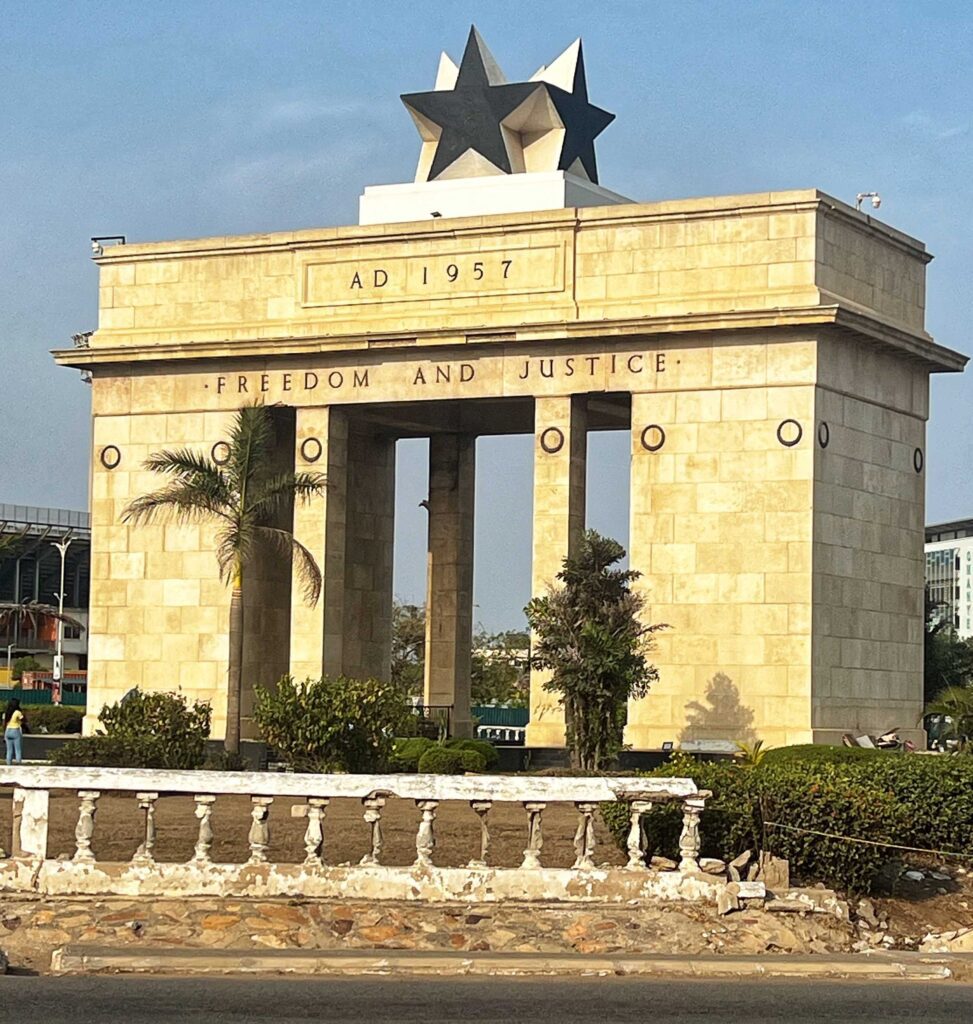
Independence Square (Black Star Square)
The best photo spot in Accra is Independence Square. This won’t take up much time, but it’s well worth a position on our list of places to see in Accra! Go to see the Independence Arch which serves as a symbol of Ghana’s liberation from British colonial rule. There is also the Eternal Flame of African Liberation which was lit by Ghana’s first president, Kwame Nkrumah. There are also several other monuments and statues you can visit in the square.
This iconic square is a symbol of Ghana’s independence and features the Independence Arch, the Eternal Flame of African Liberation, and various monuments and statues commemorating the country’s history. Many festivals and events occur in the square. If you happen to be in Ghana on March 6, Independence Day, make sure to head there to check it out!
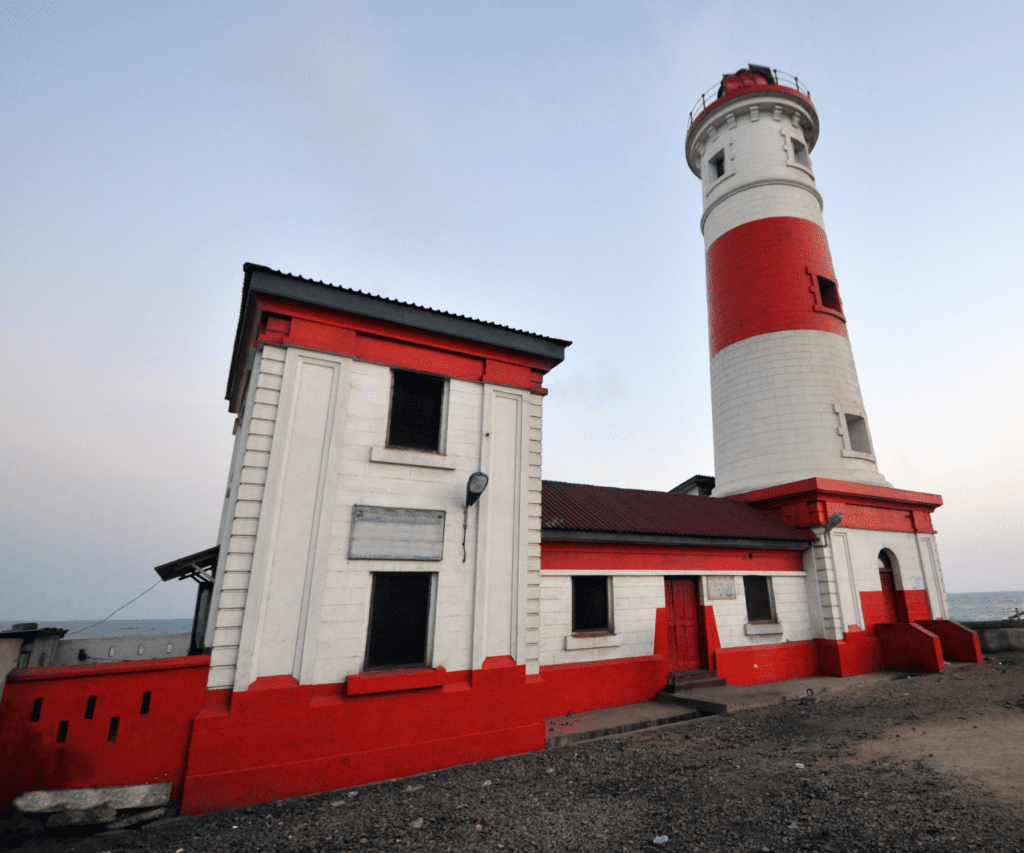
Jamestown
Jamestown is one of the oldest districts in Accra and is situated along the coast. Start your visit at the colonial era Jamestown Lighthouse. While not officially open to the public, some locals have keys and will give you a tour for a few Cedis. This will allow you to ascend 100 steps to a panoramic view of the coastline and city. You can also visit the remains of James Fort built in the17th century. See the remnants of its walls and cannons, and learn about it’s history as a center of trade and colonial administration.
After your history lesson, take some time to walk on Jamestown Beach to enjoy the ocean views. And wander down Brazil Road to see marvelous street art. Even better, time your visit to coincide with the Chale Wote Street Art Festival. It’s usually held in August.
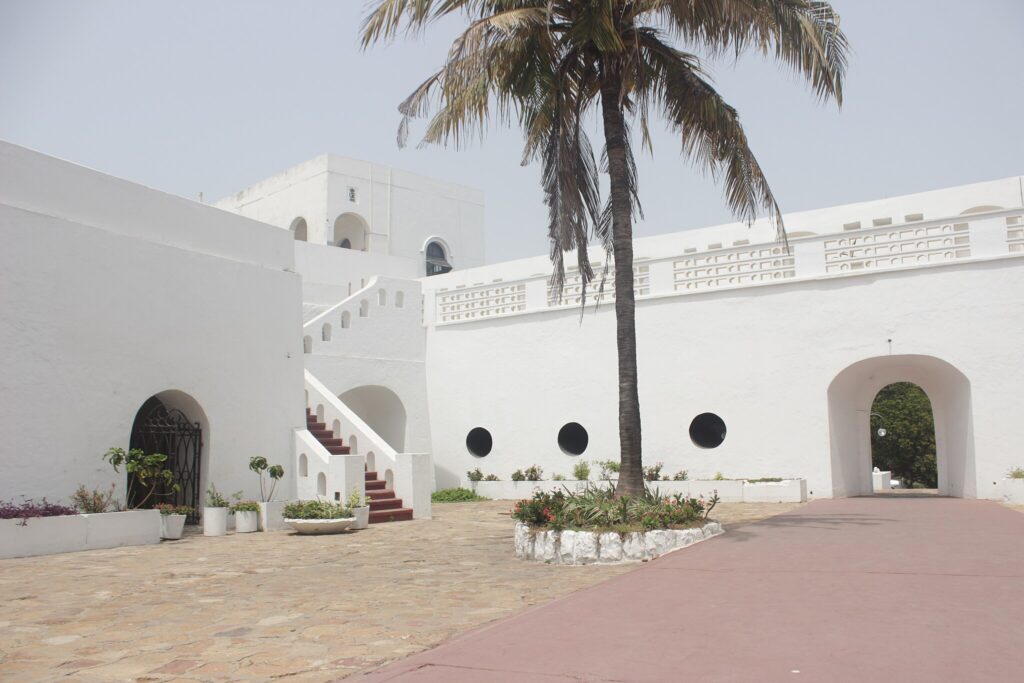
Osu Castle (Christiansborg Castle)
Osu Castle was originally built to be a trading post by Danish occupiers in the 17th century. The castle stored goods and enslaved humans to be transported on arriving ships. Under British rule, it served as the seat of colonial administration. Today it serves as the offices for the President of Ghana. Unfortunately, the interior is not open to the public. But it’s worth a visit to admire the exterior architecture, as well as pay homage the many human beings who transported from their homelands to the New World.
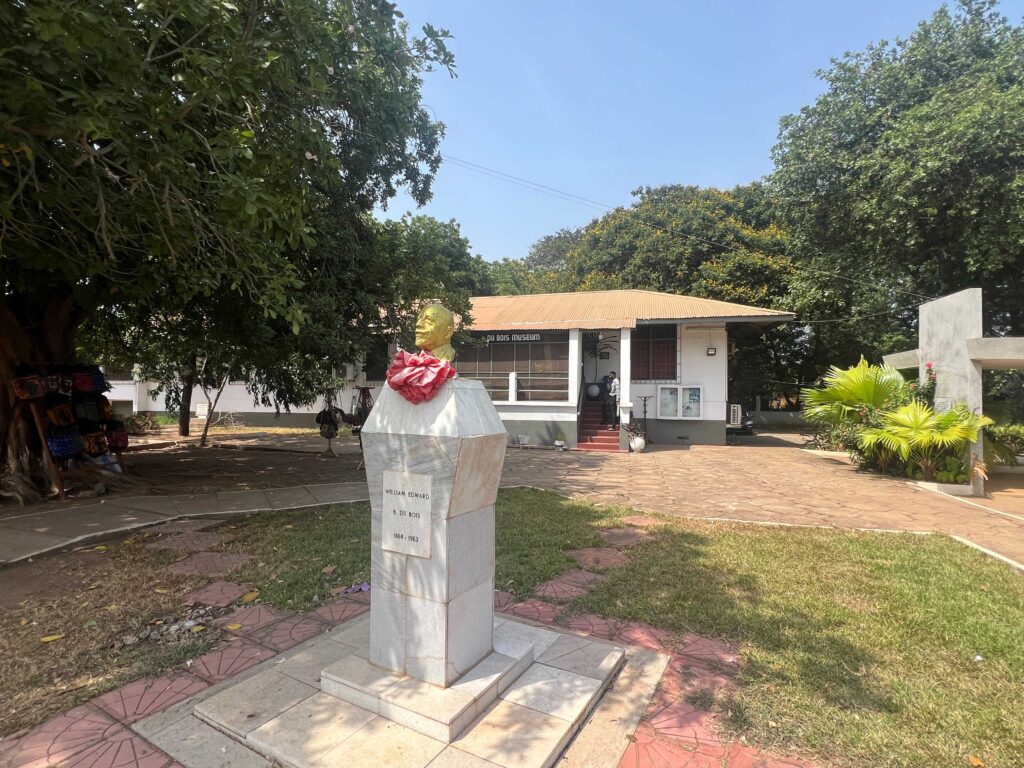
W.E.B. Du Bois Centre
W.E.B. Du Bois was a leading figure in the U.S. civil rights movement and co-founded the National Association for the Advancement of Colored People (NAACP). He was also involved in the Pan-African movement. This movement promoted unity, solidarity, and independence for people of African descent worldwide. In 1961 at the age of 93, Du Bois moved to Accra at the invitation of President Nkrumah to help build the newly independent nation and to compile the “Encyclopedia Africana” series. He lived in Accra until his death in 1963.
The W.E.B. Du Bois Centre for Pan-African Culture is located in the house where Du Bois lived in Accra. The house serves as a museum and houses memorabilia and Du Bois’ personal library. You can also visit the tomb where Du Bois and his wife Shirley Graham Du Bois are interred.
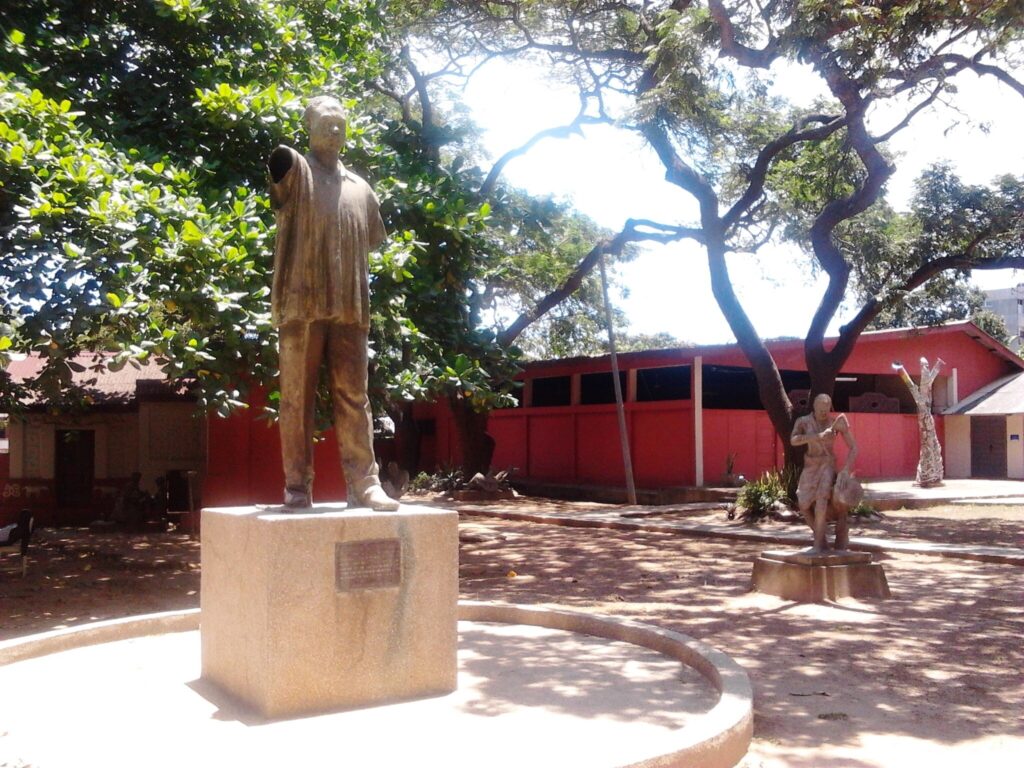
National Museum of Ghana
The places in Accra we’ve covered so far delve into more recent history. But at the National Museum of Ghana, you can dive deep into Ghana’s ancient history. The museum features artifacts from ancient Ghanaian civilizations such as tools, pottery, and jewelry. There’s also displays of stunning traditional Ghanaian textiles, clothing, masks, and sculptures. An art gallery showcases both contemporary and traditional Ghanaian art.
Exhibits explain both the history of Ghana and the impact of colonialism on Ghanaian society. There’s also a special gallery focused on the life of Kwame Nkrumah, the first president of Ghana. Outside of the museum lies the sculpture garden. These interesting and unique sculptures represent different aspects of Ghanaian culture, history, and identity.

Labadi Beach
The history of Ghana can be pretty heavy. So one of the great places in Accra to visit is Labadi Beach. Here you can relax and unwind on the golden sand and admire the gorgeous ocean views. You can visit a oceanside bar for some great cocktails, enjoy some water sports, or watch the local fishermen bring in their daily catch. If you visit on a weekend, there’s sure to be a party atmosphere complete with bonfires and reggae music.

Visit a Market
Of course you want to purchase some great souvenirs to remember your trip to Ghana. Some of the best places to visit in Accra for shopping are Makola Market and the Arts Centre. Makola Market is one of the largest and busiest markets in the city. You can buy everything you can think of there. Since it’s not just targeted at tourists, you will find a wide array of day-to-day items along with textiles, clothing, fresh produce, and traditional home remedies.
If you prefer to purchase traditional Ghanaian crafts, textiles, and other souvenirs, visit the Arts Centre. This bustling market can be a bit overwhelming with it’s tight pathways and warren of booths and pleas from sellers to buy their wares. But don’t let it intimidate you. Take a quick pass through the market to see what they have for sale, then go back to booths with items that interest you. Prepare to bargain! Ask for a price, then offer half of what they say. Then be willing to pay about 75% of the quoted price. And remember, what is only a few more dollars to you can mean a lot more to the locals. So be generous!
Which of these places in Accra are you most excited about visiting?
Tell us below! And check out our other posts on Africa. You can also contact us and follow us on Facebook, Instagram and Pinterest so you never miss a post!

